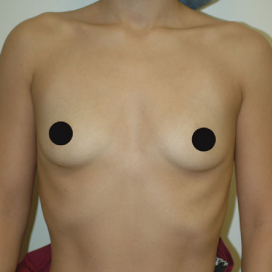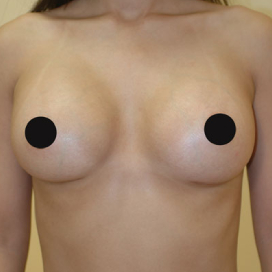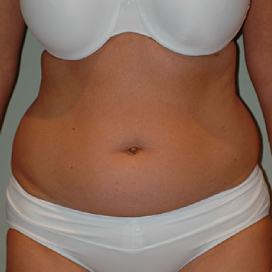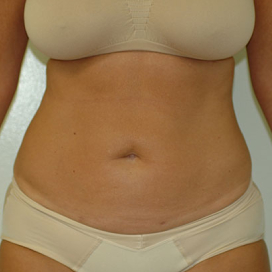If you’re considering going through with a liposuction treatment, you’re certainly curious about which method is the safest on the market. Because of this, the professionals at Gartner Plastic Surgery have put together this article to discuss some of the fundamentals, as well as the method of liposuction that is considered to be the most secure.
Contents
- 1 IN A NUTSHELL: WHAT IS LIPOSUCTION?
- 2 WHAT EXACTLY IS MEANT BY THE TERM “TUMESCENT TECHNIQUE”?
- 3 WHAT ARE THE ADVANTAGES OF UNDERGOING A TUMESCENT LIPOSUCTION PROCEDURE IN NEW JERSEY?
- 4 THE DEVELOPMENT OF LIPOSUCTION OVER THE YEARS
- 5 WHAT MAKES TUMESCENT LIPOSUCTION DISTINCT FROM VASER LIPOSUCTION?
- 6 IS IT POSSIBLE THAT CERTAIN REGIONS OF LOCALIZED FAT ARE RESISTANT TO DIET AND EXERCISE?
- 7 IS IT POSSIBLE THAT CERTAIN REGIONS OF LOCALIZED FAT ARE INHERITED?
- 8 WHO ARE SOME PEOPLE WHO COULD BENEFIT FROM HAVING LIPOSUCTION DONE IN NEW JERSEY?
- 9 WHO SHOULD NOT CONSIDER THEMSELVES A VIABLE CANDIDATE FOR LIPOSUCTION?
- 10 IS LIPOSUCTION A VIABLE OPTION FOR TREATING OBESITY IN PATIENTS?
- 11 WHAT ARE THE CHARACTERISTICS OF A SUCCESSFUL LIPOSUCTION PROCEDURE?
- 12 DOES LIPOSUCTION GIVE LASTING RESULTS?
- 13 WHAT ARE THE POTENTIAL SIDE EFFECTS OF HAVING LIPOSUCTION DONE?
- 14 LEARN MORE ABOUT LIPOSUCTION IN NEW JERSEY
IN A NUTSHELL: WHAT IS LIPOSUCTION?
The idea behind tumescent liposuction is one that is surprisingly straightforward. A surgical procedure known as liposuction is used to reshape the body by removing extra fat deposits that are situated in the layer of tissue that is between the skin and the muscle.
Tumescent liposuction requires the use of a local anesthetic in addition to a microcannula, which is a very tiny stainless steel tube with a blunt end. A liposuction cannula, which is often attached to a strong suction pump, is introduced into the fat via small incisions under the skin. The cannula then forms tiny tunnels through the fat, which allows the fat to be removed by suction as the cannula moves through the fat. As a consequence of the liposuction recovery process, these microscopic tunnels will contract and eventually dissolve, which will result in an enhanced body shape.
WHAT EXACTLY IS MEANT BY THE TERM “TUMESCENT TECHNIQUE”?
When administering local anesthesia with the tumescent approach in New Jersey, huge amounts of highly diluted lidocaine also known as a local anesthetic and epinephrine or a medication that shrinks capillaries are injected into the subcutaneous fat. This causes the capillaries to constrict. The adjective tumescent describes a state that is both bloated and firm. When using the tumescent procedure, a very big amount of lidocaine solution is injected into fat. Because of this, the regions that are being treated literally turn tumescent. The tumescent approach results in substantial and long-lasting local anesthetic of the skin and the subcutaneous fat underneath it.
WHAT ARE THE ADVANTAGES OF UNDERGOING A TUMESCENT LIPOSUCTION PROCEDURE IN NEW JERSEY?
Patients no longer need intravenous sedatives, narcotic analgesics, or general anaesthetic while having liposuction performed in New Jersey with the tumescent technique since the local anesthetic employed in this method is so effective. Because the epinephrine in the anesthetic solution causes extensive capillary constriction, there is very little bleeding both during and after the surgical procedure as a consequence of the effects of the epinephrine. When compared to the more traditional techniques, which consisted only of administering general anaesthetic, this newer type of liposuction represents a significant advancement.
THE DEVELOPMENT OF LIPOSUCTION OVER THE YEARS
The first successful liposuction procedures were performed in Italy and France in 1978, and the procedure was not popularized in the United States until 1982. The tumescent technique, which was developed in the late 1980s, has demonstrated that it is not only less painful than the older techniques that required general anesthesia, but that it also produces optimal cosmetic results, reduces the amount of time needed for post-operative recovery, and is safer than those older techniques.
WHAT MAKES TUMESCENT LIPOSUCTION DISTINCT FROM VASER LIPOSUCTION?
The medical treatment known as tumescent liposuction removes fat while the patient is under the influence of local anesthetic. The names of all other gadgets and instruments that assist in the removal of fat while the patient is under the influence of local anaesthetic are trademarks owned by various companies. Not one of these methods is utilized in place of the tumescent approach; rather, all of them are used within it.
IS IT POSSIBLE THAT CERTAIN REGIONS OF LOCALIZED FAT ARE RESISTANT TO DIET AND EXERCISE?
Yes. Diet and exercise are not always effective for reducing fat that is placed in some areas of the body, particularly the belly, the hips, and the region directly under the chin. In a similar vein, even after pregnancy, a woman’s stomach and hips may continue to store fat despite her best attempts to lose weight via diet and exercise. That said, that is when liposuction treatments are utilized for patients’ advantage.
IS IT POSSIBLE THAT CERTAIN REGIONS OF LOCALIZED FAT ARE INHERITED?
Yes. Fat deposits in certain areas of the body are typically hereditary and are difficult, if not impossible, to eradicate by physical activity or nutrition alone. After the age of 30, an individual’s body composition often changes according to a pattern that is defined genetically. Liposuction is figuratively speaking a dream come true for some individuals. Only with liposuction is it possible to achieve a discernible change in the body’s contours. In practice, being able to concentrate the effects of dieting on certain parts of the body is analogous to having liposuction performed.
WHO ARE SOME PEOPLE WHO COULD BENEFIT FROM HAVING LIPOSUCTION DONE IN NEW JERSEY?
Candidates undergoing liposuction who are not just in excellent health but also have reasonable expectations are likely to get the greatest results. It is possible for liposuction in New Jersey to make a considerable improvement in the appearance of a suitable candidate, but it is rare to attain perfection. Patients may be of any age or weight; there are no strict restrictions on either. A significant number of liposuction patients are of average size, but their primary concern is with localized accumulations of fat.
WHO SHOULD NOT CONSIDER THEMSELVES A VIABLE CANDIDATE FOR LIPOSUCTION?
A candidate for liposuction who strives for ultimate perfection is not an ideal candidate for the procedure. Individuals who are obese or patients who have not optimized their contours via diet and exercise are often not ideal candidates for liposuction. Good candidates for liposuction in New Jersey include patients who have a healthy body weight and contours. A person who has a major medical condition or one that is only partially under control is not an ideal candidate for liposuction.
IS LIPOSUCTION A VIABLE OPTION FOR TREATING OBESITY IN PATIENTS?
It has been shown that liposuction is not an effective therapy for obesity. Even as a last option, liposuction is not a successful method of weight loss for persons who are unable to lose weight with diet and exercise alone. Patients who are obese usually never keep off the weight that is lost by liposuction. This is the case unless there is a considerable change in either the amount of calories they consume or the amount of calories they burn. Every time that large-volume liposuction has been done in an effort to cure obesity via surgery, there has been a discernible rise in the frequency of major postoperative complications. This has been the case in every single instance. Using liposuction to remove excessive quantities of fat is not a risk-free procedure. Therefore, an obese patient who feels that liposuction would assist them in their efforts to reduce weight will not see a major advantage from having liposuction performed on them.
On the other hand, liposuction may be an excellent option for a person who is overweight but whose weight has been the same for a number of years and who has localized regions of fat that cause them discomfort. When the objective is to enhance the shape of a problematic part of the body, liposuction in a patient who has more fat deposits is a feasible treatment option.
WHAT ARE THE CHARACTERISTICS OF A SUCCESSFUL LIPOSUCTION PROCEDURE?
Instead of trying to remove the most amount of fat possible, the objective of the surgeon is to provide the best possible cosmetic outcome. When too much fat is removed during liposuction surgery, the patient often ends up dissatisfied with the outcomes of the procedure since it results in an odd or strange look. This is one of the most prevalent reasons for this.
The aesthetic success of a liposuction procedure is often the result of the removal of a quantity of fat that is comparable to less than a pound or two of butter from the saddlebag region of a woman’s body or from the love handle area of a man’s body.
Even while this quantity of fat is very little when compared to an individual’s overall body weight, it nonetheless causes a significant alteration in the contours of the patient’s body.
DOES LIPOSUCTION GIVE LASTING RESULTS?
The changed contours of the body that result after liposuction are, for the most part, permanent. In the event that a patient does acquire some weight following liposuction, the result will simply be an enlarged replica of the newly sculpted body contour.
Liposuction is the only method that can permanently eliminate fat cells from the body. The new, more aesthetic profile will remain unchanged for the duration of the patient’s life, provided only that they do not put on an unhealthy amount of weight.
Even after liposuction, time marches on, and as it does, the body will undergo the natural transformations in form that are linked with the natural aging process. These changes will occur notwithstanding the results of any body contouring procedures. If a person has liposuction and then gains weight following the procedure, the treated portions of their bodies will not develop as much fat as they otherwise would have if the liposuction had not been performed. There is no truth to the widespread belief that liposuction would result in the fat returning to its previous location.
WHAT ARE THE POTENTIAL SIDE EFFECTS OF HAVING LIPOSUCTION DONE?
Based on the most recent findings from research conducted all around the globe, liposuction is an astonishingly risk-free procedure. Infections, hemorrhage, skin ulcerations, and nerve injuries are some of the uncommon complications that have the possibility of developing after any surgical treatment.
The tumescent method reduces the likelihood of these adverse effects. Liposuction, like any other surgical operation, may have a variety of unpleasant side effects, the most prevalent of which are bruising, swelling, and transient numbness. Following liposuction, it is possible for the patient to develop skin abnormalities; however, it is feasible to reduce the severity of this side effect by performing tumescent liposuction using microcannulas and having the procedure performed by an experienced surgeon such as Dr. Gartner himself.
LEARN MORE ABOUT LIPOSUCTION IN NEW JERSEY
If you’re ready to learn more about liposuction in New Jersey, contact our Gartner Plastic Surgery experts now. We would be happy to answer any questions you may have as well as get you started on your very own consultation!





